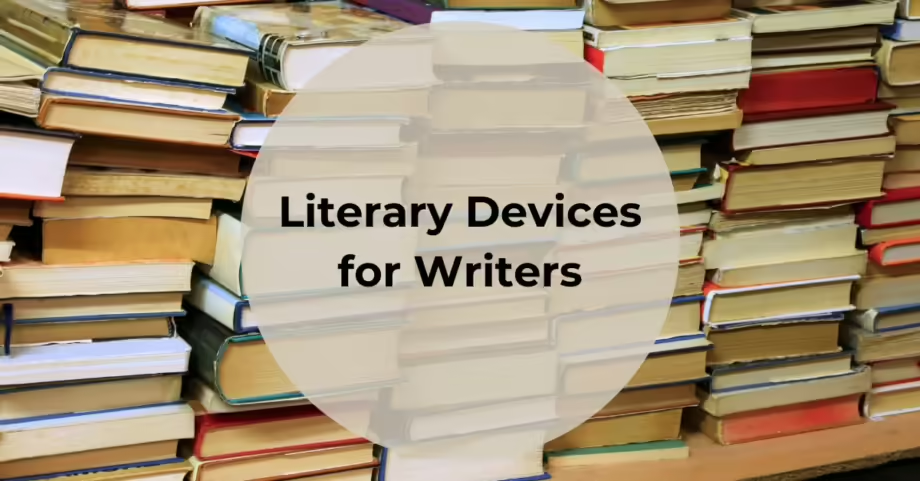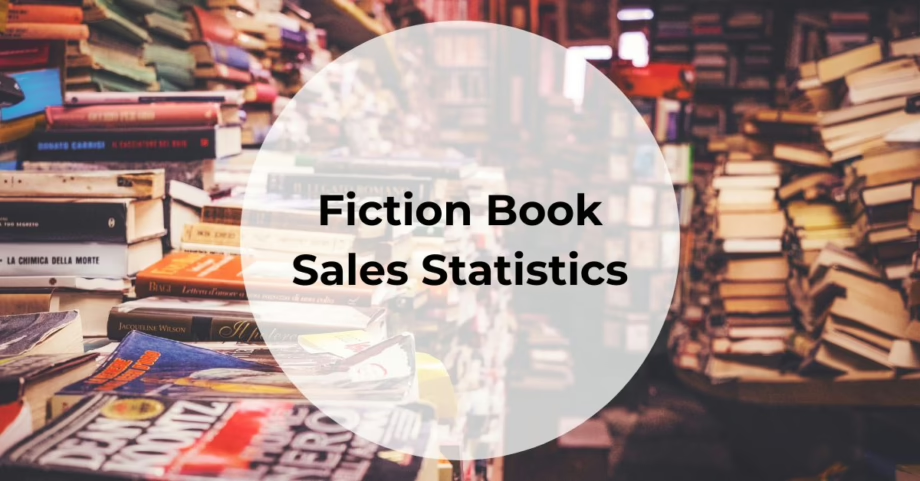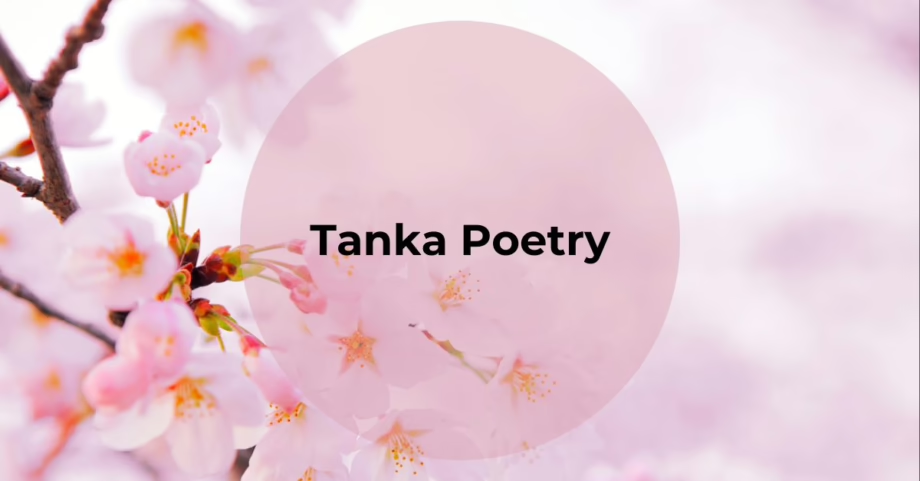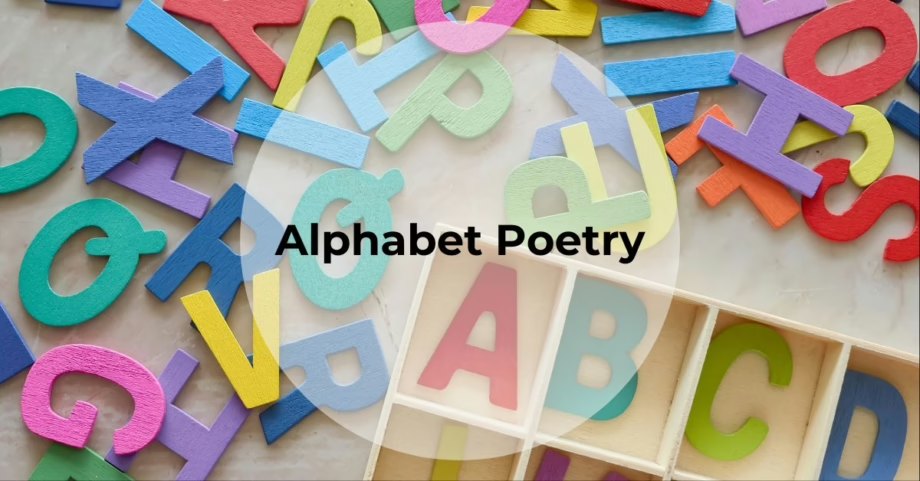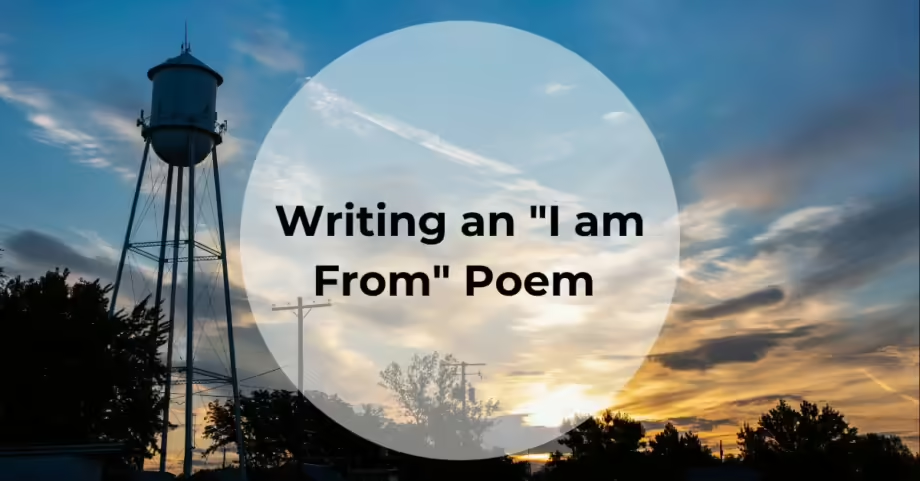Literary devices are essential tools that writers use to add depth, meaning, and complexity to their work. Whether you’re crafting a novel, a short story, or a poem, understanding these techniques will enhance your storytelling ability.
This guide explores the most common literary devices, providing definitions, examples, and exercises to improve your mastery.
What are Literary Devices?
Literary devices are techniques used to convey information, evoke emotion, and create meaning in a text. They can be divided into categories such as figurative language, structural elements, and sound patterns. These tools shape how a reader experiences a story, making them invaluable for writers.
100 Literary Devices
1. Metaphor
- Definition: A comparison between two unrelated things, suggesting they are alike in some way.
- Example: “Time is a thief.”
- Analysis: This metaphor emphasizes the fleeting nature of time and how it often takes away moments without us noticing.
- Exercise: Write a sentence comparing an abstract concept, like love or hope, to a tangible object.
2. Simile
- Definition: A comparison using “like” or “as”.
- Example: “Her smile was as bright as the sun.”
- Analysis: By comparing the smile to the sun, the author evokes warmth and radiance.
- Exercise: Create a simile that describes a character’s mood using natural elements.
3. Alliteration
- Definition: Repetition of consonant sounds at the beginning of words.
- Example: “She sells seashells by the seashore.”
- Analysis: Adds rhythm and musicality to a passage, making it more engaging.
- Exercise: Craft a sentence that uses alliteration to emphasize a key trait of a setting or character.
4. Personification
- Definition: Assigning human characteristics to non-human entities.
- Example: “The wind whispered through the trees.”
- Analysis: Creates a vivid image and gives the setting a more dynamic presence.
- Exercise: Describe a scene using personification to animate the environment.
5. Irony
- Definition: A contrast between expectation and reality.
- Example: A fire station burns down.
- Analysis: Highlights the unpredictability of life and can add humor or poignancy to a narrative.
- Exercise: Write a short scenario that uses irony to reveal character traits or themes.
6. Hyperbole
- Definition: An exaggerated statement not meant to be taken literally.
- Example: “I’ve told you a million times.”
- Analysis: Used to emphasize a point or create a dramatic effect.
- Exercise: Use hyperbole to describe a character’s reaction to an event.
7. Foreshadowing
- Definition: Hints or clues about what will happen later in the story.
- Example: “The sky darkened ominously as they set out.”
- Analysis: Builds anticipation and prepares the reader for future events.
- Exercise: Write a short paragraph that foreshadows a character’s transformation.
8. Allusion
- Definition: An indirect reference to a person, place, event, or literary work.
- Example: “He had the strength of Hercules.”
- Analysis: Allusion adds depth by connecting the text to external themes and ideas.
- Exercise: Create a sentence that alludes to a famous historical event or literary character.
9. Oxymoron
- Definition: A figure of speech that combines contradictory terms.
- Example: “Deafening silence.”
- Analysis: Highlights complexity or paradox within a situation.
- Exercise: Write a description using an oxymoron to capture a character’s internal conflict.
10. Symbolism
- Definition: Using symbols to represent ideas or qualities.
- Example: A dove symbolizes peace.
- Analysis: Enriches the narrative by adding layers of meaning.
- Exercise: Create a paragraph that uses a symbol to convey a character’s motivation.
11. Imagery
- Definition: Descriptive language that appeals to the senses.
- Example: “The golden leaves crunched underfoot as the crisp air filled her lungs.”
- Analysis: Evokes sensory experiences to create vivid scenes in the reader’s mind.
- Exercise: Write a scene using imagery to describe a season or place.
12. Onomatopoeia
- Definition: Words that imitate natural sounds.
- Example: “Buzz”, “hiss”, “clang”.
- Analysis: Adds a sense of realism and auditory imagery.
- Exercise: Incorporate onomatopoeic words in a short action scene.
13. Juxtaposition
- Definition: Placing two contrasting elements close together.
- Example: “It was the best of times, it was the worst of times.”
- Analysis: Highlights differences and emphasizes key characteristics.
- Exercise: Write a sentence that juxtaposes two conflicting emotions or ideas.
14. Antithesis
- Definition: A figure of speech that contrasts opposing ideas in a parallel structure.
- Example: “To err is human; to forgive, divine.”
- Analysis: Reinforces the contrast between ideas, enhancing the impact of the message.
- Exercise: Create an antithesis that explores a theme like love and hate or war and peace.
15. Synecdoche
- Definition: A part is made to represent the whole or vice versa.
- Example: “All hands on deck.”
- Analysis: Simplifies complex ideas by focusing on a representative part.
- Exercise: Write a sentence using synecdoche to describe a group or object.
16. Metonymy
- Definition: Substitution of the name of an attribute or adjunct for the thing meant.
- Example: “The pen is mightier than the sword” (pen represents writing, sword represents force).
- Analysis: Creates a stronger connection by associating terms.
- Exercise: Use metonymy to replace an abstract concept with a concrete image.
17. Euphemism
- Definition: A mild or indirect word or expression substituted for one considered too harsh.
- Example: “Passed away” instead of “died.”
- Analysis: Softens the impact of unpleasant topics.
- Exercise: Write a passage that uses euphemisms to discuss a sensitive subject.
18. Anaphora
- Definition: Repetition of a word or phrase at the beginning of successive clauses.
- Example: “We shall fight on the beaches, we shall fight on the landing grounds…”
- Analysis: Creates rhythm and reinforces a central theme.
- Exercise: Use anaphora to emphasize a point in a motivational paragraph.
19. Epistrophe
- Definition: Repetition of a word or phrase at the end of successive clauses.
- Example: “See no evil, hear no evil, speak no evil.”
- Analysis: Establishes emphasis through repeated conclusions.
- Exercise: Write a speech excerpt using epistrophe for emphasis.
20. Anadiplosis
- Definition: Repetition of the last word of a clause at the beginning of the next one.
- Example: “Fear leads to anger. Anger leads to hate.”
- Analysis: Creates a sense of progression or causality.
- Exercise: Craft a sequence using anadiplosis to build momentum.
21. Paradox
- Definition: A statement that contradicts itself but may reveal a deeper truth.
- Example: “Less is more.”
- Analysis: Engages the reader by presenting seemingly impossible scenarios.
- Exercise: Write a paradox that captures a character’s internal dilemma.
22. Asyndeton
- Definition: Omission of conjunctions between clauses.
- Example: “I came, I saw, I conquered.”
- Analysis: Creates a sense of urgency or rapid progression.
- Exercise: Write a sentence using asyndeton to describe a fast-paced scene.
23. Polysyndeton
- Definition: Use of several conjunctions in close succession.
- Example: “We have ships and men and money and stores.”
- Analysis: Slows down the pace, emphasizing each item in a list.
- Exercise: Use polysyndeton to describe a character’s thought process.
24. Chiasmus
- Definition: Two parallel clauses where the second reverses the order of the first.
- Example: “Ask not what your country can do for you—ask what you can do for your country.”
- Analysis: Highlights contrasts and balances ideas.
- Exercise: Write a chiasmus that explores a social or personal conflict.
25. Pun
- Definition: A play on words exploiting multiple meanings or similar-sounding words.
- Example: “Time flies like an arrow; fruit flies like a banana.”
- Analysis: Adds humor or wordplay to lighten the tone or express wit.
- Exercise: Create a pun based on a homonym or double meaning.
26. Epizeuxis
- Definition: Repetition of a word or phrase in immediate succession.
- Example: “Alone, alone, all, all alone.”
- Analysis: Adds emphasis, urgency, or emotional intensity.
- Exercise: Use epizeuxis to emphasize a character’s emotional state.
27. Litotes
- Definition: A form of understatement using double negatives or denial of the opposite.
- Example: “Not bad” to mean “good”.
- Analysis: Softens a statement or adds subtlety to the expression.
- Exercise: Write a passage that uses litotes to describe a character’s actions.
28. Apostrophe
- Definition: Addressing a person, object, or concept not present in the text.
- Example: “O Death, where is thy sting?”
- Analysis: Creates emotional intensity by speaking directly to abstract concepts.
- Exercise: Write a paragraph that uses apostrophe to express longing or frustration.
29. Zeugma
- Definition: A single word used to modify or govern two or more words, though applicable differently.
- Example: “She broke his car and his heart.”
- Analysis: Adds complexity by linking disparate elements in unexpected ways.
- Exercise: Use zeugma to describe a character’s physical and emotional state.
30. Tautology
- Definition: Redundant repetition of the same sense in different words.
- Example: “Free gift.”
- Analysis: Can emphasize a point or create an unintentional effect of redundancy.
- Exercise: Write a sentence using tautology to create emphasis or highlight a point of view.
31. Anthropomorphism
- Definition: Attributing human traits or emotions to animals or objects.
- Example: Winnie the Pooh and other talking animal characters.
- Analysis: Creates relatable characters and simplifies complex concepts.
- Exercise: Write a short scene where an animal character exhibits human-like behavior.
32. Colloquialism
- Definition: Use of informal words or expressions in writing.
- Example: “Gonna” instead of “going to.”
- Analysis: Establishes setting, voice, or character identity.
- Exercise: Write dialogue using colloquial language to reveal character background.
33. Parallelism
- Definition: Similar grammatical structures within a sentence or passage.
- Example: “Easy come, easy go.”
- Analysis: Creates rhythm and emphasizes connections between ideas.
- Exercise: Use parallelism to construct a balanced argument or reflection.
34. In Medias Res
- Definition: Beginning a narrative in the middle of the action.
- Example: Starting a story with a dramatic scene rather than an introduction.
- Analysis: Captures attention immediately and builds suspense.
- Exercise: Write an opening paragraph that begins in medias res, then flash back to the beginning.
35. Flashback
- Definition: A scene set earlier than the main story.
- Example: A character recalling their childhood in the middle of the narrative.
- Analysis: Provides background information and develops character history.
- Exercise: Write a flashback scene that reveals a key character trait or motivation.
36. Motif
- Definition: A recurring element that has symbolic significance in a story.
- Example: The constant appearance of mirrors in a story about self-reflection.
- Analysis: Reinforces themes and highlights connections within the narrative.
- Exercise: Identify a theme and create a motif that symbolizes it throughout a story.
37. Allegory
- Definition: A narrative that serves as an extended metaphor, conveying a deeper meaning.
- Example: George Orwell’s Animal Farm as an allegory for political systems.
- Analysis: Communicates complex ideas through symbolic characters and events.
- Exercise: Create a brief allegory to represent a social or political issue.
38. Verisimilitude
- Definition: The appearance of being true or real in a narrative.
- Example: Detailed descriptions that make a fictional world seem realistic.
- Analysis: Enhances believability and immerses the reader.
- Exercise: Write a description that uses verisimilitude to make an imaginary setting feel real.
39. Diction
- Definition: The choice and use of words in writing or speech.
- Example: Choosing formal language for an academic essay vs. casual language for dialogue.
- Analysis: Influences tone, style, and voice.
- Exercise: Describe the same scene using both formal and informal diction to see how it changes.
40. Euphony
- Definition: Pleasant, harmonious sound created by the choice of words.
- Example: “The murmuring of innumerable bees.”
- Analysis: Contributes to mood and aesthetic pleasure.
- Exercise: Write a poem or passage that uses euphony to create a soothing atmosphere.
41. Cacophony
- Definition: Harsh, discordant mixture of sounds created through jarring words or phrases.
- Example: “The jaws that bite, the claws that catch!”
- Analysis: Creates a chaotic or dissonant mood.
- Exercise: Write a description using cacophony to depict a tense or aggressive scene.
42. Anachronism
- Definition: Placing an object, event, or person in a time period where it does not belong.
- Example: A character in medieval times using a smartphone.
- Analysis: Can add humor or highlight thematic contrasts.
- Exercise: Write a short scene with an intentional anachronism.
43. Tone
- Definition: The writer’s attitude toward the subject or audience, conveyed through word choice and style.
- Example: A sarcastic tone in a critique of a political speech.
- Analysis: Establishes the emotional context and perspective of the piece.
- Exercise: Write a paragraph describing a setting in both an optimistic and a pessimistic tone.
44. Mood
- Definition: The emotional atmosphere of a literary work, affecting how the reader feels.
- Example: A story with descriptions of darkness, silence, and isolation might evoke a somber mood.
- Analysis: Sets the reader’s expectations and enhances immersion.
- Exercise: Create two passages with the same setting but different moods (e.g., eerie vs. peaceful).
45. Hubris
- Definition: Excessive pride or self-confidence that often leads to a character’s downfall.
- Example: A character ignoring warnings out of arrogance and suffering dire consequences.
- Analysis: Demonstrates the flaws in human nature and the consequences of overestimating oneself.
- Exercise: Write a brief character sketch showing hubris leading to an error in judgment.
46. Pathetic Fallacy
- Definition: Attributing human emotions to nature or inanimate objects.
- Example: “The weeping clouds” to indicate sadness.
- Analysis: Reflects the characters’ emotions through the environment.
- Exercise: Describe a stormy night using pathetic fallacy to mirror a character’s turmoil.
47. Anagnorisis
- Definition: The moment in a story when a character makes a critical discovery about their true identity or situation.
- Example: Oedipus realizing he has fulfilled the prophecy.
- Analysis: Often marks a turning point or climax in the narrative.
- Exercise: Write a scene where a character has an anagnorisis that changes their course of action.
48. Peripeteia
- Definition: A sudden reversal of fortune or change in circumstances, particularly in tragedy.
- Example: A wealthy man suddenly losing everything due to a single mistake.
- Analysis: Adds drama and tension, showing the fragility of human fate.
- Exercise: Create a brief story outline featuring a peripeteia that alters the protagonist’s destiny.
49. Aphorism
- Definition: A concise statement expressing a general truth or principle.
- Example: “Actions speak louder than words.”
- Analysis: Conveys wisdom or insight succinctly, often leaving a lasting impression.
- Exercise: Write an aphorism about the nature of friendship or ambition.
50. Red Herring
- Definition: A misleading or distracting element meant to divert attention from the main issue.
- Example: A mystery novel that introduces a suspicious character who turns out to be innocent.
- Analysis: Builds suspense and keeps readers guessing.
- Exercise: Write a scene using a red herring to mislead the reader about a character’s intentions.
51. Foil
- Definition: A character who contrasts with another, usually the protagonist, to highlight qualities of the main character.
- Example: Dr. Jekyll and Mr. Hyde.
- Analysis: Helps define and emphasize the protagonist’s traits.
- Exercise: Create a foil character for your protagonist that accentuates their strengths or weaknesses.
52. Prolepsis
- Definition: Flash-forward to a future event within a narrative.
- Example: Mentioning a character’s death at the beginning of the story.
- Analysis: Builds suspense and provides foreshadowing.
- Exercise: Write a proleptic sentence hinting at a future outcome of your story.
53. Frame Story
- Definition: A narrative technique where a main story contains one or more related stories within it.
- Example: The Canterbury Tales.
- Analysis: Allows for multiple perspectives and layers of storytelling.
- Exercise: Outline a frame story that connects different character narratives.
54. Epiphany
- Definition: A character’s sudden realization or insight that changes their understanding.
- Example: A character realizing they’ve been pursuing the wrong goal all along.
- Analysis: Signals character growth or turning points.
- Exercise: Write a brief scene where a character experiences an epiphany that changes their life.
55. Bildungsroman
- Definition: A coming-of-age story that follows a character’s development from youth to adulthood.
- Example: To Kill a Mockingbird.
- Analysis: Explores themes of growth, self-discovery, and personal identity.
- Exercise: Draft an outline for a Bildungsroman centered around a key life event.
56. Deus Ex Machina
- Definition: An unexpected, improbable event that resolves a seemingly unsolvable problem.
- Example: A god intervening at the last moment to save a character.
- Analysis: Often seen as a controversial or lazy narrative device.
- Exercise: Write a short scene where a deus ex machina solution is employed, then rewrite it with a more organic resolution.
57. Catharsis
- Definition: An emotional release experienced by characters or the audience, often at the climax of a tragedy.
- Example: Oedipus’ self-realization and downfall.
- Analysis: Purges emotions, leading to a sense of renewal or relief.
- Exercise: Describe a scene that elicits catharsis through intense conflict or revelation.
58. Enjambment
- Definition: The continuation of a sentence or clause over a line break in poetry.
- Example: “The sun hovered above / the horizon, reluctant to fade.”
- Analysis: Creates rhythm and can emphasize particular words or ideas.
- Exercise: Write a poem using enjambment to enhance flow and meaning.
59. Syllogism
- Definition: A form of deductive reasoning with a major premise, a minor premise, and a conclusion.
- Example: “All men are mortal. Socrates is a man. Therefore, Socrates is mortal.”
- Analysis: Used to present logical arguments or expose contradictions.
- Exercise: Create a syllogism that argues a thematic point related to your story.
60. Nemesis
- Definition: A long-standing rival or archenemy, often serving as the protagonist’s ultimate challenge.
- Example: Sherlock Holmes and Professor Moriarty.
- Analysis: Embodies opposition and defines the stakes of the conflict.
- Exercise: Develop a nemesis for your main character, outlining their contrasting qualities and motivations.
61. Invective
- Definition: Insulting, abusive, or highly critical language.
- Example: “You are a lazy, good-for-nothing scoundrel!”
- Analysis: Used to express strong emotions and vilify a character.
- Exercise: Write a scene where one character uses invective language to convey intense anger.
62. Cliffhanger
- Definition: A suspenseful ending that leaves the reader eager to know what happens next.
- Example: A protagonist hanging off a literal or figurative cliff.
- Analysis: Builds suspense and keeps readers engaged.
- Exercise: Create a cliffhanger ending for a short story or chapter that leaves questions unanswered.
63. Epithet
- Definition: An adjective or descriptive phrase expressing a characteristic of the person or thing mentioned.
- Example: “Alexander the Great.”
- Analysis: Provides insight into a character’s traits or achievements.
- Exercise: Write a few epithets that summarize a character’s prominent features or attributes.
64. Bathos
- Definition: An abrupt shift from serious and elevated language to the trivial or ridiculous.
- Example: “He spent years building his career, reputation, and sandwich.”
- Analysis: Can create humor or diminish a subject’s importance.
- Exercise: Write a sentence using bathos to add comedic relief to a serious situation.
65. Pathos
- Definition: An appeal to the audience’s emotions to evoke sympathy or sadness.
- Example: A description of a child losing their home.
- Analysis: Creates an emotional connection and investment in the narrative.
- Exercise: Write a short passage that uses pathos to elicit empathy from the reader.
66. Verbal Irony
- Definition: When what is said is the opposite of what is meant.
- Example: Saying “Great job!” after someone makes a mistake.
- Analysis: Adds layers of meaning and can convey sarcasm.
- Exercise: Create a dialogue between two characters using verbal irony to highlight misunderstandings.
67. Tragic Flaw (Hamartia)
- Definition: A character’s flaw or error in judgment that leads to their downfall.
- Example: Macbeth’s ambition or Othello’s jealousy.
- Analysis: Adds complexity to characters and drives tragic narratives.
- Exercise: Define a tragic flaw for a character in a story and outline how it leads to their demise.
68. Pun
- Definition: A play on words with multiple meanings or similar-sounding words for humorous effect.
- Example: “I’m reading a book on anti-gravity—it’s impossible to put down.”
- Analysis: Lightens the tone and showcases wit.
- Exercise: Create a few puns based on everyday objects or situations.
69. Trope
- Definition: A common or overused theme or device in literature.
- Example: The “reluctant hero” trope in adventure stories.
- Analysis: Helps set reader expectations but can feel cliché if overused.
- Exercise: Identify a trope in your favorite book or movie and write a unique twist on it.
70. Epigraph
- Definition: A short quotation or saying at the beginning of a book or chapter, intended to suggest its theme.
- Example: “Lawyers, I suppose, were children once.” — To Kill a Mockingbird
- Analysis: Sets the tone and provides context or foreshadowing.
- Exercise: Choose an epigraph for a story you’re working on, explaining why it fits the theme.
71. Hyperbaton
- Definition: Alteration of the typical order of words in a sentence for emphasis or effect.
- Example: “This I must see.”
- Analysis: Draws attention to particular words or phrases, adding drama.
- Exercise: Rewrite a simple sentence using hyperbaton to emphasize a specific element.
72. Paralipsis
- Definition: Pretending to omit something while actually highlighting it.
- Example: “I’m not going to mention his past failures…”
- Analysis: Creates a sense of intrigue or irony by drawing attention indirectly.
- Exercise: Write a statement using paralipsis to subtly reveal a character’s secret.
73. Palindrome
- Definition: A word, phrase, or number that reads the same backward and forward.
- Example: “Madam, in Eden, I’m Adam.”
- Analysis: Often used for wordplay and to demonstrate linguistic creativity.
- Exercise: Create a short palindrome phrase that conveys a simple message.
74. Polyptoton
- Definition: Repetition of words derived from the same root but with different endings.
- Example: “The strong arm of the law is not always just.”
- Analysis: Emphasizes a concept through linguistic variation.
- Exercise: Write a sentence using polyptoton to stress a theme like justice or power.
75. Synesthesia
- Definition: Describing one sense in terms of another, blending sensory experiences.
- Example: “The silence was thick and heavy.”
- Analysis: Creates a vivid, multi-sensory experience for the reader.
- Exercise: Describe a color or sound using synesthetic language.
76. Malapropism
- Definition: The mistaken use of a word in place of a similar-sounding one, often with humorous effect.
- Example: “He’s the pineapple of politeness” (instead of “pinnacle”).
- Analysis: Adds humor and reveals a character’s lack of knowledge.
- Exercise: Write a short dialogue where a character’s malapropism leads to confusion.
77. Syllepsis
- Definition: A figure of speech where a single word governs multiple parts of a sentence, applying differently to each.
- Example: “He stole my heart and my wallet.”
- Analysis: Creates a clever or humorous link between unrelated ideas.
- Exercise: Write a sentence using syllepsis to connect contrasting ideas humorously.
78. Antanaclasis
- Definition: Repetition of a word in a sentence where it has different meanings each time.
- Example: “We must all hang together, or most assuredly we shall all hang separately.”
- Analysis: Plays with word meanings to add wit or rhetorical impact.
- Exercise: Write a sentence using antanaclasis to convey both humor and a serious message.
79. Apophasis
- Definition: Mentioning something by stating that it will not be mentioned.
- Example: “I won’t even begin to talk about his poor manners.”
- Analysis: Emphasizes a point by pretending to pass over it.
- Exercise: Create a dialogue using apophasis to reveal a character’s thoughts indirectly.
80. Parody
- Definition: A humorous or satirical imitation of a serious work or genre.
- Example: Don Quixote is a parody of chivalric romances.
- Analysis: Critiques or entertains by exaggerating certain aspects of the original.
- Exercise: Write a parody of a popular fairy tale, changing its tone or themes for comedic effect.
81. Portmanteau
- Definition: A word blending the sounds and meanings of two different words.
- Example: “Brunch” (breakfast + lunch).
- Analysis: Creates new, concise words that convey combined meanings.
- Exercise: Invent three portmanteaus by combining the meanings of two related words.
82. Aposiopesis
- Definition: A sudden breaking off in speech, leaving the statement incomplete.
- Example: “If you do that again, I’ll—!”
- Analysis: Creates suspense or reflects a character’s overwhelmed emotions.
- Exercise: Write a dialogue where a character uses aposiopesis to imply an unspoken threat.
83. Circumlocution
- Definition: Using many words to describe something simple, often to avoid directness.
- Example: “He has departed to a better place” instead of “He died.”
- Analysis: Can obscure meaning or add politeness and subtlety.
- Exercise: Describe a mundane activity using circumlocution to create formality or humor.
84. Isocolon
- Definition: Parallel structure in which phrases or clauses have equal length and rhythm.
- Example: “I came, I saw, I conquered.”
- Analysis: Adds balance, rhythm, and emphasis to a passage.
- Exercise: Write a persuasive sentence using isocolon to structure your argument.
85. Antimetabole
- Definition: Repetition of words in successive clauses in reverse order.
- Example: “You like it; it likes you.”
- Analysis: Emphasizes contrast or balance within a statement.
- Exercise: Create a sentence using antimetabole to reveal a central paradox or theme.
86. Mesodiplosis
- Definition: Repetition of a word or phrase in the middle of successive clauses or sentences.
- Example: “We are perplexed, but not in despair; persecuted, but not forsaken.”
- Analysis: Adds rhythm and continuity between clauses.
- Exercise: Write a series of sentences using mesodiplosis to create a rhythmic flow.
87. Diacope
- Definition: Repetition of a word or phrase with one or more intervening words.
- Example: “The horror! Oh, the horror!”
- Analysis: Expresses strong emotions or emphasis.
- Exercise: Write a character’s reaction using diacope to convey shock or disbelief.
88. Euphemism
- Definition: A mild or indirect expression used to replace one that is harsh or blunt.
- Example: “Passed away” instead of “died.”
- Analysis: Softens sensitive subjects and adds politeness.
- Exercise: Write a dialogue using euphemisms to discuss an awkward or difficult topic.
89. Tmesis
- Definition: Inserting a word or phrase into another word for emphasis.
- Example: “Abso-bloody-lutely!”
- Analysis: Adds emphasis and can create a humorous or informal tone.
- Exercise: Create a dialogue where a character uses tmesis to stress a point.
90. Anastrophe
- Definition: Inversion of the typical word order for emphasis or effect.
- Example: “Into the water dove the boy.”
- Analysis: Adds poetic quality or shifts focus.
- Exercise: Rewrite a sentence using anastrophe to alter its impact.
91. Anthimeria
- Definition: Using a word in a new grammatical form, often changing a noun into a verb.
- Example: “I could use a good sleep.”
- Analysis: Creates a fresh or playful use of language.
- Exercise: Write a few sentences that use anthimeria to transform nouns into verbs.
92. Catachresis
- Definition: An exaggerated or absurd metaphor or comparison.
- Example: “The voice of your eyes is deeper than all roses.”
- Analysis: Creates striking or unusual images.
- Exercise: Write a short poem using catachresis to create surreal imagery.
93. Logos
- Definition: An appeal to logic and reason, using facts, statistics, and rational arguments.
- Example: “Studies show that regular exercise reduces stress.”
- Analysis: Convincing through evidence and logical structure.
- Exercise: Write a persuasive paragraph using logos to support a claim.
94. Pleonasm
- Definition: The use of more words than necessary to express an idea, creating redundancy.
- Example: “I saw it with my own eyes.”
- Analysis: Adds emphasis but can also create an unintentional humorous effect.
- Exercise: Write a passage using pleonasm to emphasize a character’s strong reaction.
Here are five new literary devices to replace the repeated ones:
95. Ecphonesis
- Definition: An emotional exclamation or outcry.
- Example: “O, woe is me!”
- Analysis: Conveys strong emotion, often used in dramatic monologues or dialogues.
- Exercise: Write a character’s internal monologue using ecphonesis to express a moment of intense emotion.
96. Hubris
- Definition: Excessive pride or self-confidence leading to a character’s downfall.
- Example: A hero believing they are invincible and taking on impossible odds.
- Analysis: Highlights the flaws and consequences of arrogance.
- Exercise: Develop a character whose hubris leads them to make a critical mistake.
97. Antiphrasis
- Definition: Using a word or phrase in a way that is opposite to its literal meaning, often for ironic effect.
- Example: Calling a giant “Tiny.”
- Analysis: Adds humor or sarcasm, emphasizing contradictions.
- Exercise: Write a sentence using antiphrasis to highlight a character’s contradiction.
98. Asyndeton
- Definition: The omission of conjunctions between parts of a sentence.
- Example: “I came, I saw, I conquered.”
- Analysis: Creates a concise, impactful, and fast-paced statement.
- Exercise: Write a list or series of actions using asyndeton to build momentum.
99. Consonance
- Definition: Repetition of consonant sounds within or at the end of words in a phrase or sentence.
- Example: “The lumpy, bumpy road.”
- Analysis: Adds rhythm and musicality to a passage, enhancing auditory imagery.
- Exercise: Write a short poem using consonance to create a melodic or rhythmic effect.
100. MacGuffin
- Definition: A MacGuffin is an object, event, or goal that serves as a motivator for the characters and plot but lacks intrinsic value or importance. It primarily functions to drive the story forward.
- Example: The briefcase in Pulp Fiction, whose contents are never revealed but push the characters’ actions and decisions throughout the film.
- Analysis: The MacGuffin engages characters and moves the plot along but remains irrelevant in itself, leaving its nature ambiguous to keep the focus on the journey.
- Exercise: Create a plot where the characters chase a MacGuffin. Describe why it’s crucial to them, but avoid specifying its nature or true purpose.
Conclusion
Mastering these 100 literary devices will empower you to become a more skilled and expressive writer. Experiment with these techniques in your writing, and observe how they transform your narratives, deepening both meaning and reader engagement.
Fiction Book Sales Statistics (2025): A Writer’s Guide
Understanding the data behind fiction book sales isn’t just interesting trivia—it can shape how you…
Tanka Poetry: History, Structure, and How to Write Your Own
Tanka poetry is a traditional Japanese poetic form known for its brevity, emotional depth, and…
Alphabet Poetry: How to Craft Engaging Poems From A to Z
Alphabet poetry, sometimes called abecedarian poetry, is a fun form of creative writing that uses…
The Climax: Volume 6, Issue 4
I didn’t know what to expect when I started this magazine in 2018. A few…
I am From Poems & How to Write One
Poets often reflect on the places they came from. An origin poem, of sorts. Made…
Concrete Poetry: Where Writing & Art Merge
Writers always look for ways to push boundaries, combining forms and experimenting with genres. Concrete…

